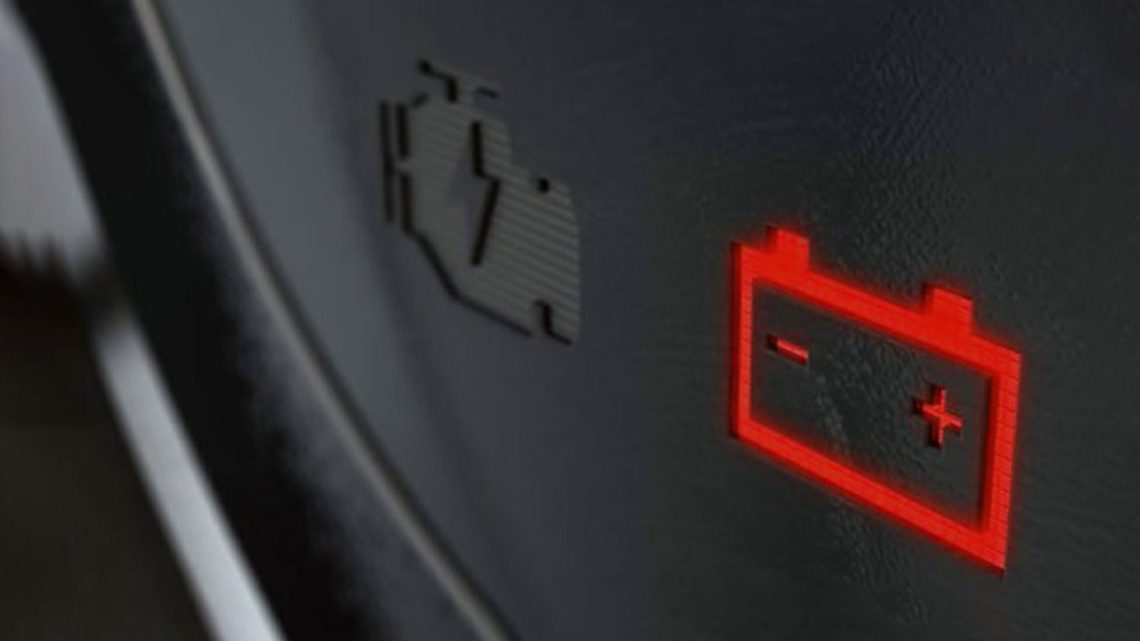If you think your battery might be failing, you’re in the right place. We talked to two automotive repair specialists about the first symptoms of a bad car battery, which include dim headlights, malfunctioning electrical components, and a slow-starting engine.
Table of Contents
In this article, we’ll cover the full list of signs to look for to diagnose the issue. We’ll also discuss what causes a weak car battery and how to differentiate the symptoms of a bad alternator from battery issues. Read on to learn more!
What’s the Purpose of a Car Battery?
The primary purpose of an auto battery is to provide power for starting your vehicle. It also acts as a surge protector for the car’s computer and provides power for short-term use of things like lights, stereo, GPS, or wipers when the engine is off.
The car battery is part of the starting system. There are three main components in this system:
- Ignition switch: This is either the starter button you press or where you insert your key.
- Starter relay (solenoid): The switch controls this component. When you turn the ignition, it sends a small electrical current to the starter relay, causing a pair of contacts to close.
- Starter motor: When those contacts close, the battery sends voltage to the starter motor, which turns some gears to start the car.
9 Signs Your Car Battery is Dead (Or Dying)
Here are the top bad car battery symptoms, as follows;
1. Heavy Corrosion
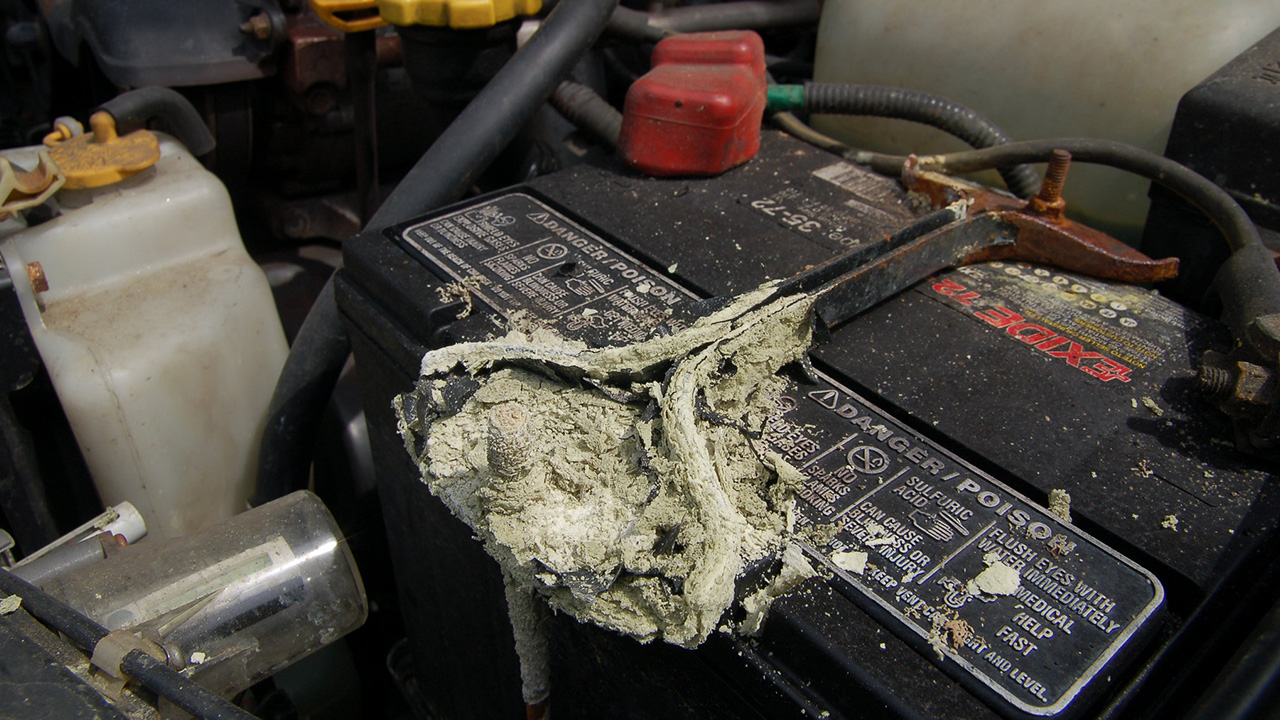
When was the last time you looked at your battery? If your engine is sluggish when you turn the key, pop your hood and take a look at the battery. If you see a lot of fluffy blue corrosion — usually at the positive terminal — or a clear film across the top of the battery case, your battery is either giving off acidic fumes or it’s leaking the actual battery acid. Both of these conditions create resistance between the battery and the cables, which lowers its voltage and, therefore, efficiency.
Wear protective gloves and safety glasses when dealing with battery corrosion. Automotive repair specialist Duston Maynes says, “The residue is battery acid and it can burn your skin. You can clean off the corrosion, but this is generally a sign that your car needs a new battery.” A little bit of residue can usually be cleaned off, but a lot of corrosion means the battery is leaking acid and needs to be replaced as soon as possible.
You can clean your battery and probably see improved performance, but be aware that this is just a short-term fix because the corrosion will return. Many professionals would advise replacing the battery and possibly even the positive terminal end.
2. Older Battery
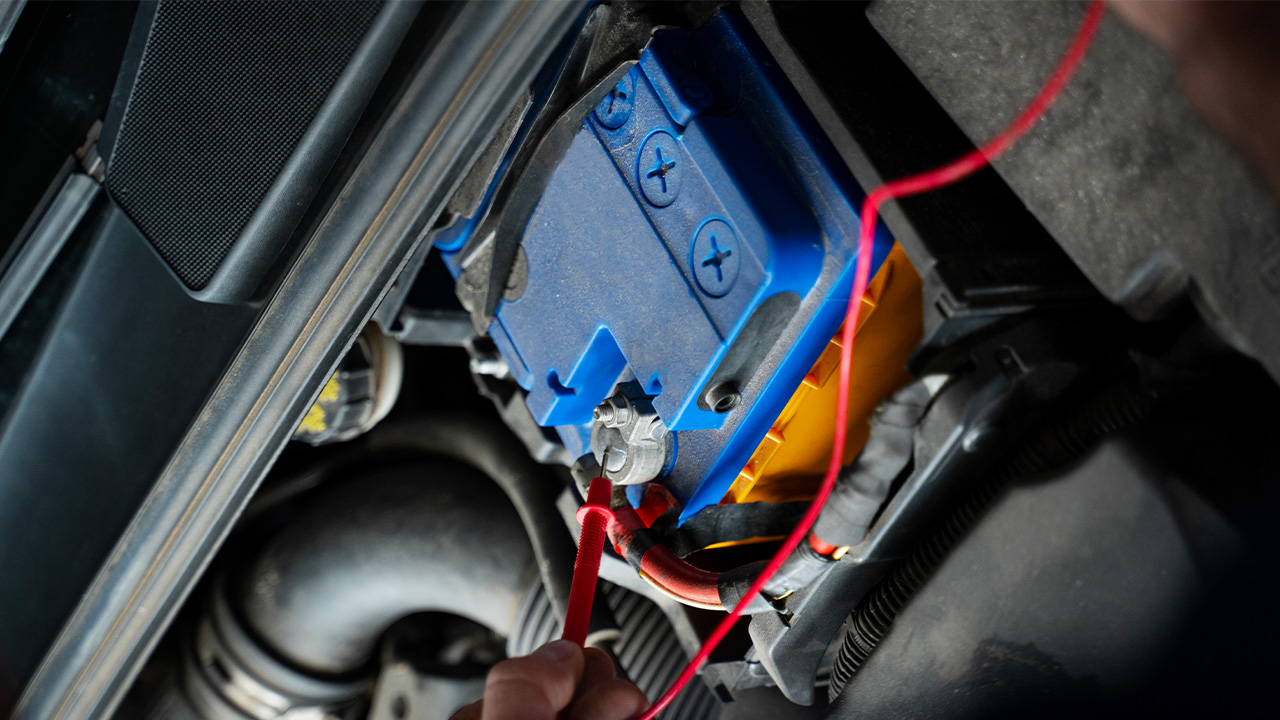
This seems obvious, but it’s worth mentioning, If your battery is more than a few years old, suspect that it may be nearing the end of its life. All parts wear out eventually, and batteries are no different. Repeated cycles of discharging during starts, extreme temperatures (both cold and hot), and other factors all cause batteries to drain over time.
Look for a round sticker that has a month and year on your battery if you don’t know the last replacement date. A sticker that reads 09/15, for example, is living on borrowed time. The average life span of a car battery is typically between four to six years according to symptoms. At around the four-year mark, you should pay more attention to it. Have a technician check to see how much charge it has or check the battery by yourself.
3. Rotten Egg Like Smell Under the Hood
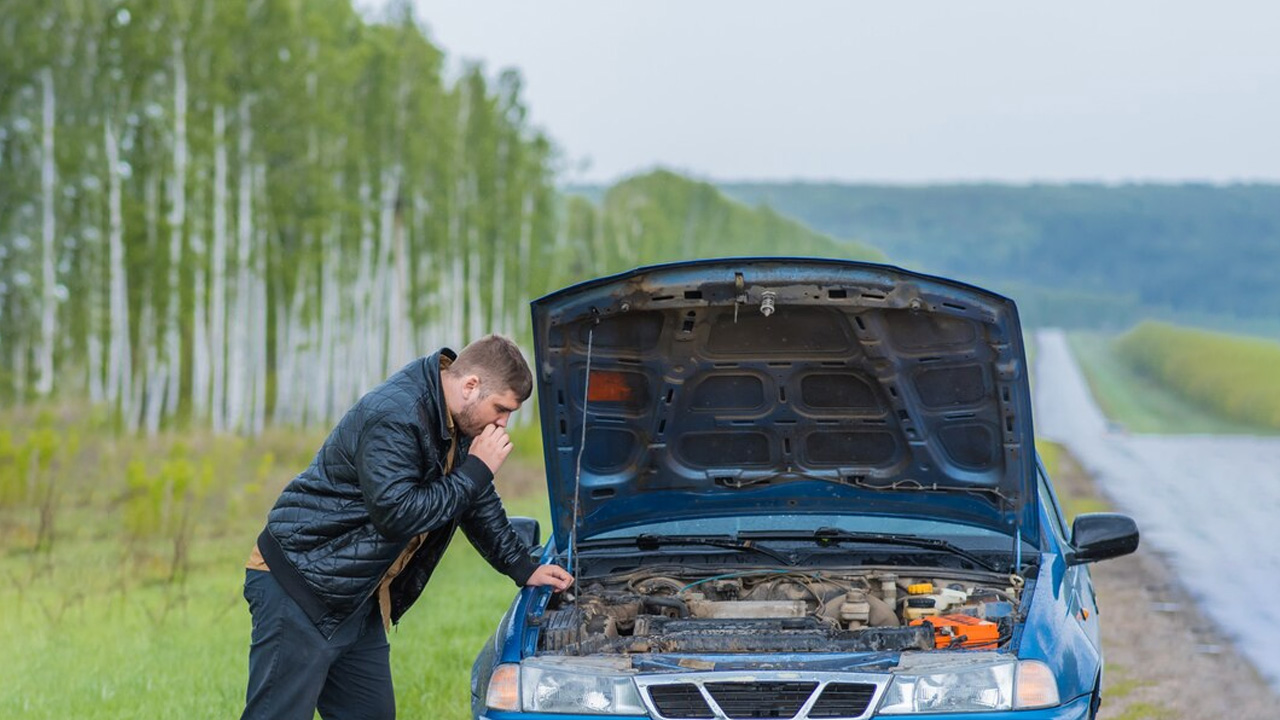
Leaking battery acid smells distinctly of sulfur. If you smell that infamous rotten egg smell when you’re near your vehicle, the battery is leaking and getting weak. It needs to be replaced fairly quickly so the acid doesn’t drip and corrode other parts of your engine.
If the battery smells – This is a warning sign that your battery is ready to fail, if it hasn’t already.
Usually, a battery has no smell, by design. If you smell rotten eggs, this means that your battery has vented gas. It has also released sulfuric acid that could harm other parts of your engine. So this smell is potentially the costliest problem listed here if you aren’t proactive in fixing it.
4. Dim Headlights and Power
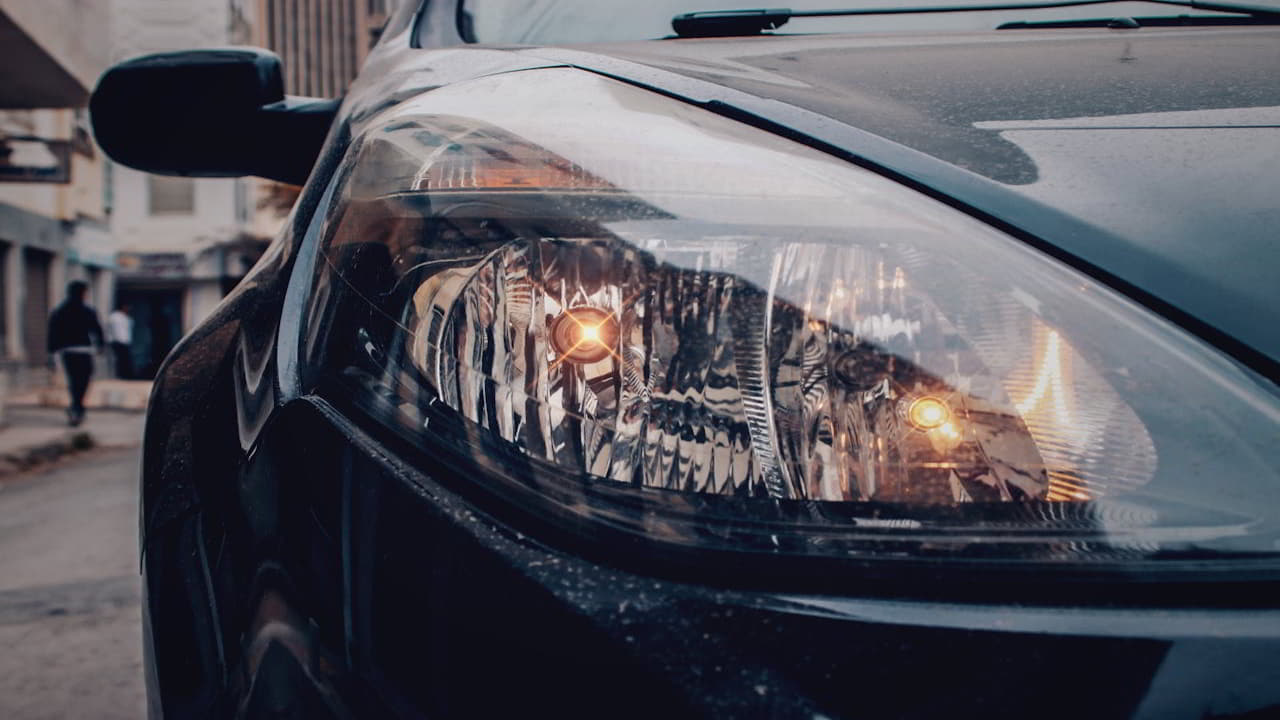
Headlights (and your car’s other electrical components) are powered directly by the battery. Sudden electrical issues, like dim or flickering headlights, are early signs that your vehicle’s battery is getting weak. You may notice other electrical issues like:
- Dashboard controls and interior lights falter or stop working
- Power windows (and sunroof) stop working
- Devices won’t charge when you plug them into the port
The lights just aren’t getting the power they need. Lights are vital to your safety because they enable you to see other drivers and let them see you, so take note if they aren’t shining as brightly as they should.
In this scenario, it’s likely that your battery is strong enough to provide power to your electronic components, but not strong enough to fully energize the starter. This is another scenario when you might be dealing with a bad starter. In this case, jump starting your car and multiple attempts turning the key are also your next steps.
Related Pick: Easy Safety Checks For Your Vehicle
5. Electrical Issues
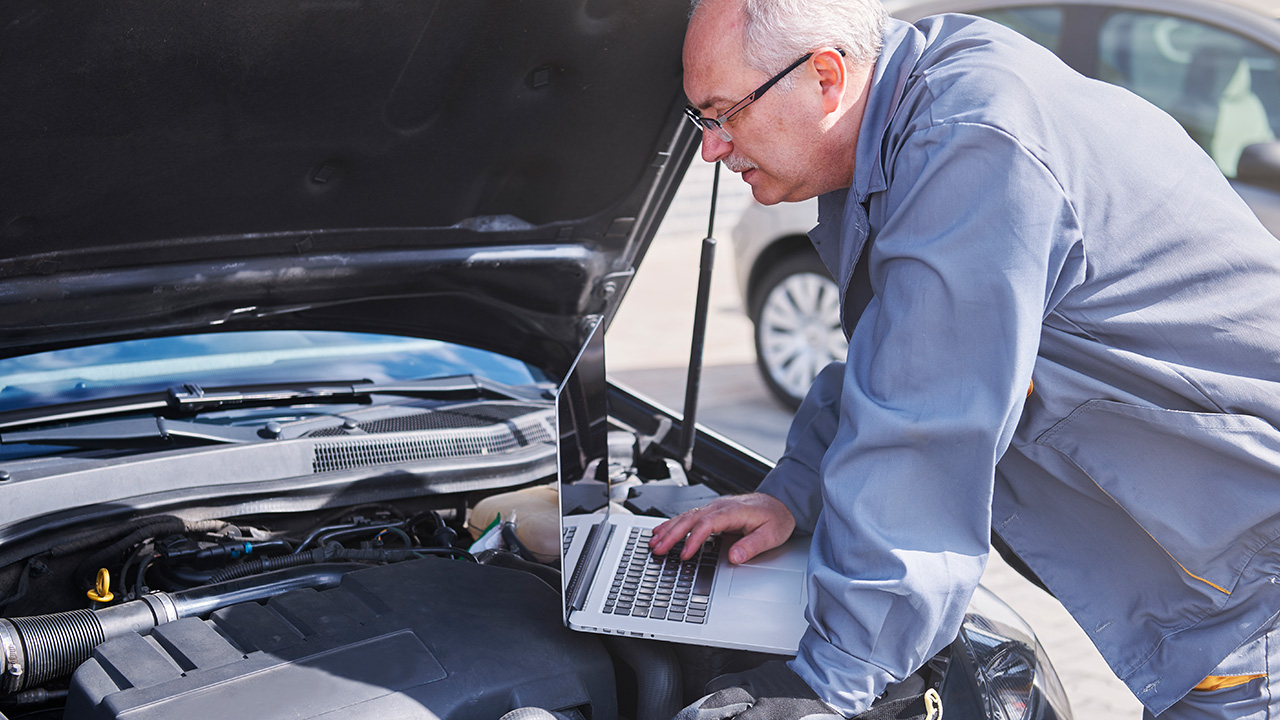
If your car battery is failing, it’s not going to be able to fully power your vehicle’s electrical components – including your headlights, radio, air conditioning, and power windows. As the battery’s capacity diminishes, it struggles to meet the demands of these electrical accessories, potentially resulting in reduced performance.
So, if you notice these features operating sluggishly or your headlights seem dim and weaker than usual, take note! Not only is reduced light a safety issue, but it may also mean your car battery is almost kaput.
6. Slower Start, Clicking Sound
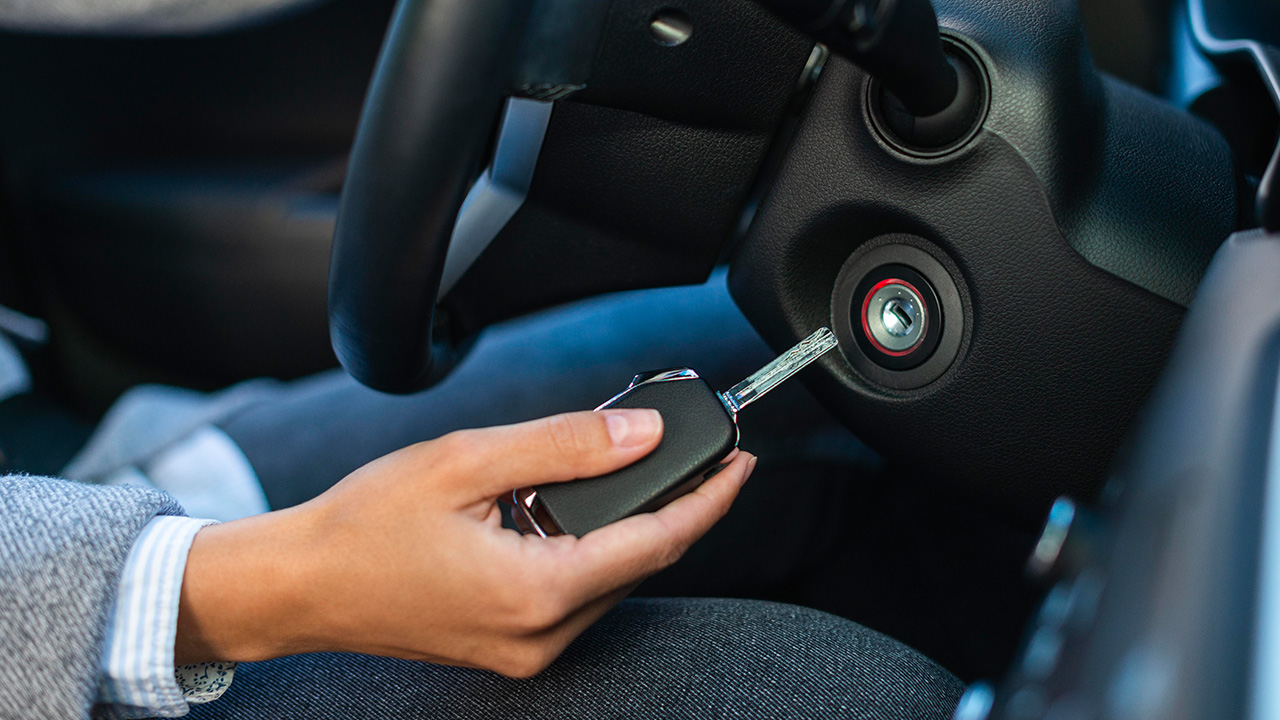
If you turn the key in the ignition and the engine’s startup is noticeably sluggish, you’re definitely dealing with a weak battery issue. It might take several times for the engine to finally crank up, or your vehicle might make a low “rurrr” sound and never turn over at all.
If you try to crank your engine and nothing happens, or if you hear a clicking sound but the engine never turns over, it means your battery is already dead or incredibly weak. To get on the road again, change the battery yourself or jumpstart the car so you can get it to a mechanic.
When temps drop below 20 degrees, generally any car’s starting cadence will slow down. Get below 0 and it gets even slower. If you notice this behavior suddenly and the temperature hasn’t decreases– a slow, dragging start suddenly begin, get your battery as soon as possible to a professional and don’t ignore it. Eventually, the car will not start.
This is the classic bad battery symptom. You turn the key and the engine cranks, making a sluggish whirring sound for longer than usual before the engine starts. If this is happening, it’s time to get your battery tested.
7. Frequent Jumpstarts
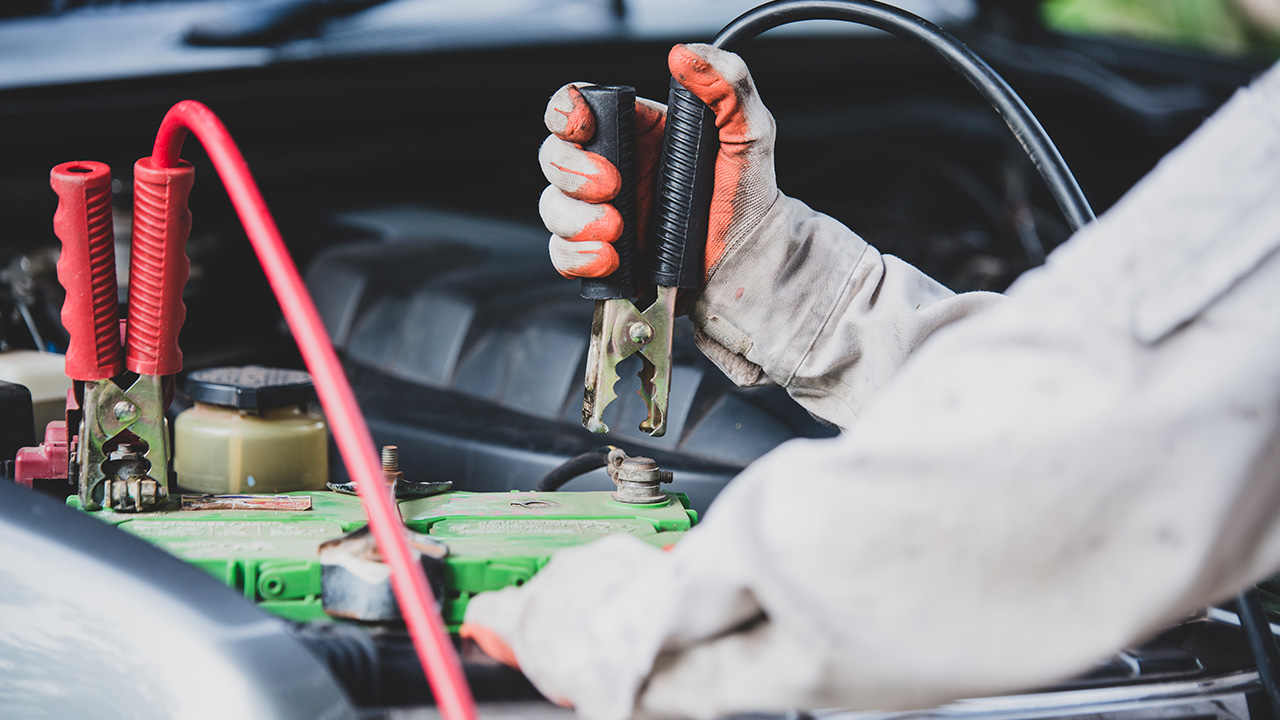
If you’ve recently been relying on jumpstarts to get your vehicle on the road, the battery is low and probably can’t hold a charge anymore. This is especially true if the battery is more than 3 years old.
You know how you’re constantly having to charge your old phone? Car batteries are no different — as batteries age, they lose their ability to hold a charge as long. If you have an older battery that doesn’t seem to hold its charge as well, it’s probably time for a new one.
But what about if your battery is new and requires jump starts? There are a couple of possibilities here. The first is the simplest: you have a battery that is prematurely wearing out. Check your warranty if testing indicates that the battery replacement is needed.
8. Engine Light Flashes
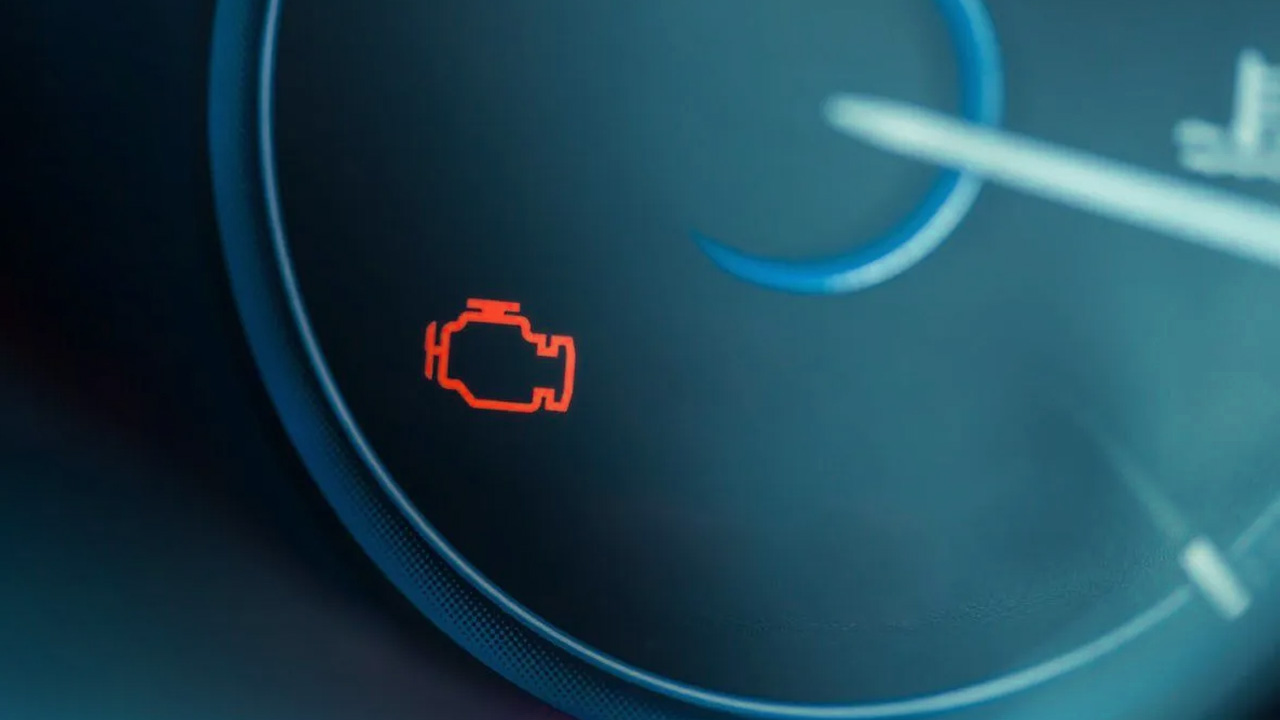
If the battery light on your dashboard lights up, there’s something going on with your car’s electrical system, and one potential culprit is a weak or dying battery. If you see this light along with any of the above-mentioned symptoms, your battery may need to be replaced.
9. Swollen Battery Size
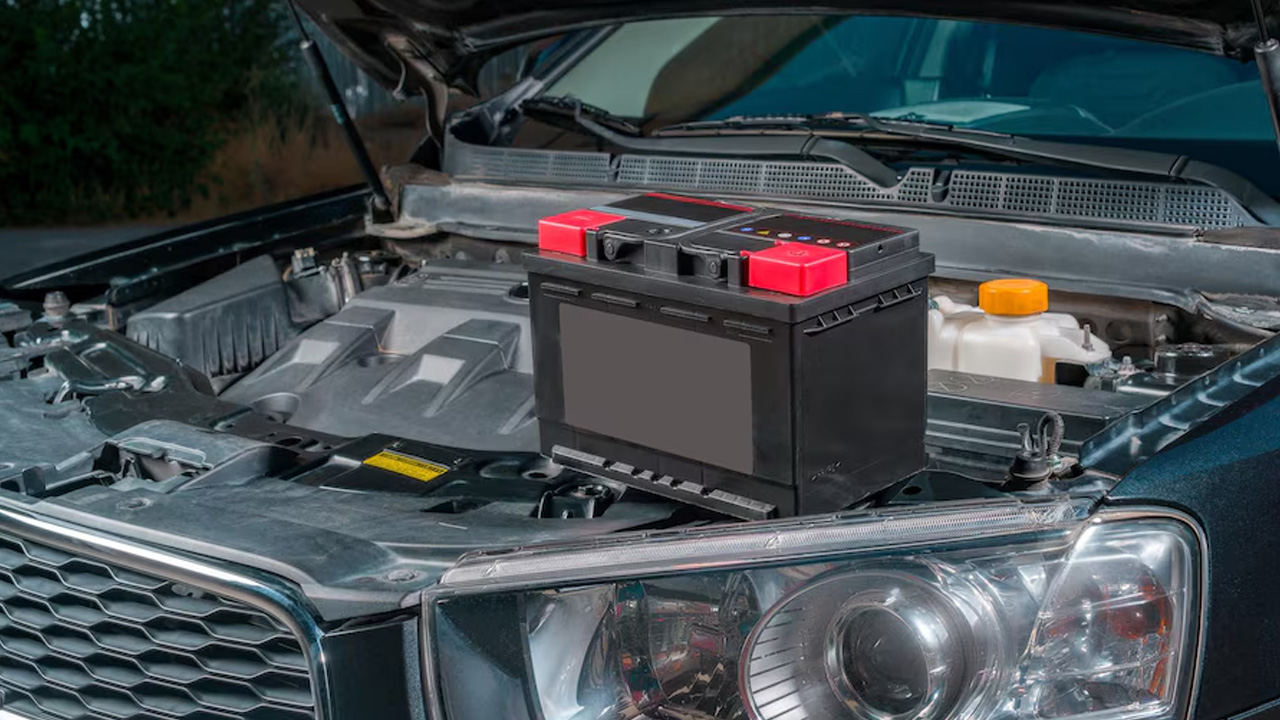
While you have the hood popped, inspect the battery’s exterior casing. If you see any signs of swelling, cracking, or bulging, it means the battery is damaged and weakening, and it needs to be replaced as soon as possible. Keep in mind that a car battery is typically a rectangular shape; if the rectangle looks irregular at all, there’s definitely a bad battery symptoms that needs attention.
Further Queries
A Bad Alternator Causes Additional Symptoms
Alternator issues like dim headlights, electrical problems, and trouble starting your car can be frustratingly similar to symptoms of a weak battery. So, how do you figure out which problem you’re facing? Alternator problems typically cause rattling and grinding sounds that you don’t usually hear with a weak battery.
Additionally, when you start the engine, it will often die immediately if the alternator is the issue. A bad alternator is usually due to normal wear and tear or possibly engine fluid leaks. Take your car to a mechanic for inspection and replacement if needed.
Replace the Old Battery ASAP or See a Mechanic
If your vehicle’s battery is weak, it’s crucial to get a new battery as soon as possible. In order to avoid issues like getting stranded or dealing with unexpected malfunctions. Plus, driving around with a weak battery can lead to other mechanical problems and potential damage to your car.
If you want to replace the battery yourself, visit an auto parts store and purchase a battery that fits the year, make, model, and engine size of your vehicle. If you’d rather have a professional handle it, take your car to a mechanic, local dealership, or automotive shop.
Troubleshooting Tips
An effective way to determine if it’s your battery or alternator is to connect jumper cables from a running vehicle’s battery to yours. After a few moments, try starting your vehicle. Once it’s started, remove the jumper cables.
If your engine stalls, your alternator has likely failed. If it continues to run, then your battery is probably the culprit. In this case, you should get your battery and charging system tested immediately. The National Transportation Safety Board has provided a report for safety risks to emergency responders from high voltage, battery fires.
You Might Like to Read: 10 Best Winter Car Care Tips to Follow
FAQs
A battery can go bad due to several reasons, including age, extreme temperatures, overcharging, and poor maintenance of the car battery. Repeated cycles of discharging and charging, as well as exposure to extreme heat or cold, can also shorten a battery’s lifespan.
Signs of a bad battery include corrosion on the connectors, a warped battery case, a rotten egg smell from the battery, dim headlights, electrical issues, a clicking sound when you turn the key, frequent jumpstarts, the check-engine light being on, and a swollen battery case.
A car with a bad battery might run for a short period, but it will eventually fail to start or run reliably. The exact time depends on the severity of the battery’s condition, but it’s generally advisable to replace a bad battery as soon as possible to avoid getting stranded.
